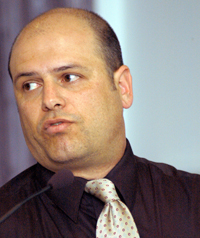 While modern athletes seem to be a marvel of evolution, a Charles Sturt University (CSU) academic questions whether the remarkable stamina that they display is a product of modern training techniques and a deep understanding of human and animal physiology or ‘mind over matter’.
While modern athletes seem to be a marvel of evolution, a Charles Sturt University (CSU) academic questions whether the remarkable stamina that they display is a product of modern training techniques and a deep understanding of human and animal physiology or ‘mind over matter’.Speaking at a public lecture at the University’s Bathurst Campus on Wednesday 27 August, Associate Professor of Exercise Physiology and Head of the School of Human Movement Studies, Frank Marino, explored some theories related to human endurance by presenting research on human performance from the past decade.
“In the last ten years, CSU research has indicated that human endurance is intimately tied to the function of our brain or the central nervous system (CNS),” Professor Marino said.
“By manipulating parameters such as the body temperature or the feedback that one gets during the performance, we might be able to ’trick‘ the brain into providing a greater capacity for humans to push the boundaries of endurance.”
Professor Marino also noted that experiments on the differences between African and Caucasian athletes also suggest that physiology is not necessarily the same for all.
“It has been found that body size – in particular body mass – is a determining factor of how well you will be able to perform in the heat.
“I have also proposed that the brain is the key to how we make adjustments during exercise so that the physiological limits are seldom ever reached. This is a new way of thinking about how performance is determined by elite athletes.
“The key to understanding the limits to ‘life in the fast lane’ is to better understand how the brain drives skeletal muscles under different conditions. Research in the next five to eight years will target this aspect of exercise science,” Professor Marino said.





Social
Explore the world of social